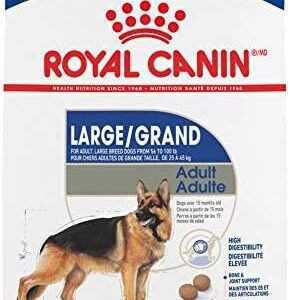Seeing your furry friend in pain can be heartbreaking, but it’s important to recognize the signs and know how to help them. Dogs can’t tell us when they’re hurting, so it’s up to us to look for behavioral changes and physical symptoms that indicate discomfort.
This blog will guide you through identifying common signs of pain in dogs and offer practical steps to alleviate their suffering.
From subtle changes in behavior to noticeable physical discomfort, you’ll learn how to be an attentive and caring pet owner, ensuring your dog feels better and stays healthy.
Table of Contents
Signs of Pain in Dogs

Pain in dogs can show up in many ways. Things like breed, age, health history, and personality play a role. Changes in behavior are common signs, like more aggressive barking or hiding.
Other signs include becoming more clingy, avoiding activities, limping, or trembling. You might also notice changes in appetite or difficulty sleeping. Even small signs like reduced alertness or excessive licking can mean your dog is in pain.
Watching for changes in behavior over time is key. This is true, even more so for older dogs. If you notice any unusual behaviors, it’s time to call a vet.
Causes of Pain in Dogs
Pain in dogs can come from many sources. Minor injuries to serious illnesses can all cause discomfort. Arthritis, muscle strains, and joint pain are common issues.
Injuries to the back or spine can also be very painful. Other causes include infections, inflammation, tumors, and organ failure. Even psychological problems can lead to pain.
For example, older dogs may get arthritis, causing a lot of pain. Some breeds, like Dachshunds, can get back pain. French Bulldogs might have allergies or skin infections, leading to discomfort and itchiness.
Psychological issues, like separation anxiety, can also cause pain. Dogs that don’t get enough mental and physical stimulation can show signs of discomfort.
Diagnosis of Pain in Dogs

Recognizing pain in dogs can be tricky. Dogs often hide their vulnerabilities. But, there are signs that can help diagnose pain.
Changes in stance, posture, and gait can indicate pain. Dogs in pain may hold themselves differently, appearing crouched or stiff. They might also become quiet and less active, or pace to try to feel better.
Panting, vocalizing, restlessness, trembling, and seeking seclusion are other signs. Dog owners should watch for changes in behavior that might suggest pain. This includes changes in appetite, increased sensitivity, or difficulty with activities.
CT scans, ultrasounds, and X-rays are tools used to diagnose pain in dogs. They help identify issues like arthritis or cancer. But, a vet’s physical exam is also essential for an accurate diagnosis.
Treatments for Pain in Dogs
Pain in dogs can be managed in several ways. One common method is changing their diet to a pain-relieving food. Adding supplements or foods like turmeric can also help. Exercise is key, but owners should check with the vet to avoid overdoing it.
Physical therapy is another effective option. It includes massage, stretching, and exercises. It can also include ultrasound or laser therapy. It’s important to get a vet’s advice and ensure the physical therapist is certified. Natural remedies like valerian root and fish oil can also help with pain.Signs of Pain in Dogs
Medications for Pain in Dogs

Medication is often used to help dogs with pain. There are many types, including over-the-counter and prescription options. Non-steroidal anti-inflammatory drugs (NSAIDs) are common for pain management in dogs.
These drugs reduce inflammation and relieve pain from arthritis and hip dysplasia. Gabapentin or amantadine are also used for pain relief in some cases.
When pain is harder to control, opioids might be prescribed. Opioids like tramadol and methadone are used for severe pain. But, they should only be used under a vet’s advice because of serious side effects.
It’s important to follow the vet’s instructions and watch for any side effects. These drugs can harm dogs if not used correctly.
- VETERINARIAN RECOMMENDED – Formulated by Dr. Joseph, a veterinarian with over 30 years of experience relieving his patie…
- 5X MORE GLUCOSAMINE – Damage to the joints and the surrounding tissue are common injuries for dogs and cats. Our dog hip…
- RELIEF FROM INFLAMMATION – If your dogs or cats love to play, then they’ll likely end up with painful swelling in their …










- VETERINARIAN RECOMMENDED – Formulated by Dr. Joseph, a veterinarian with over 30 years of experience relieving his patie…
- 5X MORE GLUCOSAMINE – Damage to the joints and the surrounding tissue are common injuries for dogs and cats. Our dog hip…
- RELIEF FROM INFLAMMATION – If your dogs or cats love to play, then they’ll likely end up with painful swelling in their …










- Turmeric for Dogs – Coco and Luna Turmeric supplement contains Curcumin which is an antioxidant that supports joint, hep…
- Eases Joint Tenderness – Our safe and natural formula has Turmeric which is a powerful anti-inflammatory for dogs that m…
- BioPerine – Our product is made with BioPerine which increases of key dietary elements by stimulating your dog’s metabol…










- ASPIRIN FOR DOGS – Nutri-Vet Aspirin for Dogs is formulated to keep your furry friend happy and active; Specifically des…
- ARTHRITIS AND JOINT CARE – Unleash the true power of dog pain relief; Our aspirin is specially formulated to ease arthri…
- GREAT TASTE – Our canine aspirin tablets come with an irresistible liver flavor that dogs love; Our tablets combine the …










- PROVIDES TEMPORARY PAIN RELIEF: Joint issues in your K-9 can cause your pet to experience nagging aches and pains. PetAr…
- LIVER FLAVORED CHEWABLE TABLET: Helps keep pain relief at bay with this easy tasty chewable tablet. PetArmor Canine Aspi…
- CONTAINS ACETYLSALICYLIC ACID: PetArmor Canine Aspirin includes Acetylsalicylic Acid to target those nagging aches and p…










Natural Remedies for Pain in Dogs
Herbal supplements, like turmeric, can help dogs with pain. A study showed that turmeric‘s active compound, curcumin, reduces inflammation and pain. It also helps with stomach issues from long-term pain.
Chamomile tea is another natural remedy for dogs. It helps reduce anxiety and relax muscles. Dogs can have chamomile tea as a compress or in boiled water, given twice a day.
Certain essential oils can also help with pain in dogs. Eucalyptus oil has anti-inflammatory properties and relieves muscle spasms. Peppermint and lavender oils are also good for pain relief. Always dilute essential oils with a carrier oil and never give them orally.
- Ease joint stiffness associated with daily activity with natural ingredients – Turmeric has been used for centuries as a…
- Gentle & natural for your pup – At Pet Honesty we’re committed to premium quality ingredients and strict safety standard…
- Right amount of actives + no fillers – Some turmeric curcumin soft chew supplements for dogs have unusually high amounts…










- Turmeric for Dogs – Coco and Luna Turmeric supplement contains Curcumin which is an antioxidant that supports joint, hep…
- Eases Joint Tenderness – Our safe and natural formula has Turmeric which is a powerful anti-inflammatory for dogs that m…
- BioPerine – Our product is made with BioPerine which increases of key dietary elements by stimulating your dog’s metabol…










- Advanced Hip & Joint Care – Providing consistent joint support with our dog arthritis supplement helps your dog stay act…
- Relieve Pain & Inflammation – Our glucosamine chondroitin supplements for dogs are enhanced with powerful anti-inflammat…
- Improve Mobility & Flexibility – Keep your dog active during any of its daily activities with our dog glucosamine! Maint…










- Joint Relief For Dogs: Our vet-formulated Native dog supplements offer effective joint and arthritis relief with powerfu…
- Natural Anti-Inflammatory Power: Featuring natural anti-inflammatory ingredients like turmeric and green lipped mussel f…
- Arthritis Comfort Naturally: Our turmeric supplement for dogs provide natural arthritis relief for dogs. These arthritis…










Dietary Changes to Help Relieve Pain in Dogs
Changing a dog’s diet can help manage pain. Start by talking to a vet to create a diet plan for your dog. The right diet keeps energy levels up and supports the immune system.
Supplements like glucosamine and chondroitin slow down joint pain in older or large breed dogs. Avoiding foods high in fat, salt, and sugar helps control inflammation. A balanced diet is key to keeping dogs healthy and reducing pain.
In severe cases, a vet might suggest a raw food diet. Commercial pet foods have fewer nutrients than raw food. Homemade treats can also be healthy, adding vitamins and minerals for dogs in pain.
Organic treats can be adjusted to help with specific health issues. Adding fish oil or turmeric can be beneficial. Fresh fruits and veggies may also be needed for extra nutrition. With a vet’s help, changing a dog’s diet can safely ease pain and inflammation.
Benefits of Dietary Changes:
• Consult a veterinarian to tailor a diet specific to the individual dog’s medical conditions and age.
• Adequate nutrition is key for managing pain.
• Balance protein, carbohydrates, and fats helps sustain energy levels and immune system health.
• Supplements such as glucosamine and chondroitin help slow down the onset of joint pains in older or large breed dogs.
• Limit foods high in fat, salt, and sugar can also be beneficial in controlling chronic inflammation or safeguard against any further damage to the joints and muscles.
• Tailored raw food diets may be suggested by veterinarians for severe cases.
• Homemade dog treats that provide essential vitamins and minerals are an option for healthy relief from pain.
• Supplement with fresh fruits & vegetables may be necessary to provide additional nutritional fortification.
Exercise Options for Dogs in Pain
Exercising a dog in pain can offer many benefits. It keeps muscles and joints flexible, relieves stress, improves circulation, and distracts from pain. Different breeds have different exercise needs.
For low-impact sports, Greyhounds and Vizslas enjoy jogging, agility, and Frisbee. French Bulldogs, Bostons, and Pugs do well with walking, swimming, and fast-paced training. Larger breeds benefit from walking and swimming, which are gentle on their joints.
It’s vital to watch dogs in pain while exercising to avoid making things worse. Exercise should be in short intervals with plenty of rest. Keep the duration and intensity low to prevent injury.
Physical Therapy for Dogs in Pain


Physical therapy can help dogs in pain. It makes them feel better and live better lives. It includes stretching, massages, and helping them move around.
Therapy like walking on a treadmill or swimming is good for dogs. Swimming is great because it’s easy on their joints.
Physical therapy improves blood flow and reduces swelling. This helps dogs move better and feel less pain. It’s important to work with a vet to find the right therapy for your dog.
Alternatives to Pain Medication for Dogs
There are other ways to help dogs feel better than just medicine. Massage can help by improving blood flow and relaxing muscles. It’s good for dogs with arthritis or muscle strains.
Chiropractic care can also help by improving movement. Physical therapy and swimming can make dogs more flexible. Acupuncture can help by reducing pain and swelling.
Comforting a Dog in Pain
When a dog is in pain, stay calm and comforting. Dogs pick up on our emotions. So, speak softly and cuddle with them.
Do things your dog loves, like going for walks. Petting and massaging can also help them feel secure. But, sometimes, these things aren’t enough.
If your dog can’t move, help them walk. Short car rides or a soft place to rest can also help. Playing soothing music can relax both you and your dog.
Preparing Your Home for a Dog in Pain
Make your home comfortable and safe for a dog in pain. Discomfort can get worse with the wrong bedding or too much noise. Provide a soft bed and keep the area quiet.
Move furniture to avoid hazards and cover sharp edges. Make sure your dog can easily get to a litter tray. This helps them feel safe and comfortable.
Dogs in pain can get easily startled. Keep their space quiet and free from distractions. A home with non-skid flooring and soft areas on furniture can help them move safely.
Knowing When to Seek Veterinary Care for Your Dog
It’s key to watch your dog for pain signs and get vet help when they get worse. Look out for signs like less activity and hiding. Also, heavy panting, glazed eyes, and breathing trouble are big red flags.
Even if your dog seems okay, a vet check is always a good idea. Your vet can do an exam, take your dog’s history, and find the right treatment. This will help your dog feel better.
Coping with a Dog in Chronic Pain
Dogs with chronic pain face big challenges. They need extra care to stay comfortable. It’s vital to listen to their pain signals and check on them often.
Watch for changes in weight, posture, and facial expressions. Make sure they get rest and playtime to avoid feeling stuck. A regular schedule for activities and meals can also help.
Try to avoid big changes in their environment. Physical therapy, like massage and hydrotherapy, can help too. Also, talk to your vet about supplements like glucosamine for joint health.
Resources for Helping Dogs in Pain
Understanding your dog’s pain is key. Talk to vets and breeders for advice. They have a lot of experience helping pets in pain.
Also, don’t forget to check out trusted websites and books on dog health. Learning about your dog’s breed can help you spot issues early. With the right advice and knowledge, you can give your dog the care they need.
FAQs:
What are the signs of pain in dogs?
Signs of pain in dogs can include vocalizing, panting, restlessness, trembling, limping, changes in posture, reluctance to move, losing interest in activities, changes in appetite, aggression, or hiding.
What are the common causes of pain in dogs?
Common causes of pain in dogs can include injury, illness, arthritis, dental issues, cancer, and other conditions.
How is pain in dogs diagnosed?
Pain in dogs is usually diagnosed through a physical examination, medical history, and radiographs. Your veterinarian may also recommend other diagnostic tests such as an ultrasound or CT scan to further evaluate your dog’s condition.
What types of treatments are available to help relieve pain in dogs?
Treatments for pain in dogs can include medications, physical therapy, dietary changes, natural remedies, and exercise. Your veterinarian can help you choose the best treatment plan for your dog.
What types of medications are used to treat pain in dogs?
Pain medications used in dogs can range from over-the-counter products to prescription medications. Your veterinarian can help you decide which medication is best for your dog.
Are there natural remedies for pain in dogs?
Yes, there are several natural remedies for pain in dogs. These can include supplements such as fish oil and glucosamine, herbs such as turmeric and ginger, and homeopathic remedies. Your veterinarian can help you choose the best natural remedy for your dog.
Can dietary changes help relieve pain in dogs?
Yes, changing your dog’s diet can help to reduce pain. Foods high in omega-3 fatty acids, such as salmon and sardines, can help reduce inflammation. Probiotics may also help to boost the immune system and reduce inflammation.
Are there exercise options for dogs in pain?
Yes, there are several exercise options for dogs in pain. Low-impact activities such as swimming, walking, and jogging are all great options. Talk to your veterinarian about the best exercise plan for your dog.
What is physical therapy for dogs in pain?
Physical therapy for dogs in pain is a type of rehabilitation that helps to improve mobility and reduce pain. Physical therapy can include activities such as stretching, massage, and therapeutic exercises. Your veterinarian can refer you to a qualified physical therapist.
What are alternatives to pain medication for dogs?
Alternatives to pain medication for dogs can include natural remedies, dietary changes, and physical therapy. Talk to your veterinarian to decide which alternative is best for your dog.
How can I comfort a dog in pain?
Comforting a dog in pain can involve providing a warm, quiet place for your dog to rest, speaking in a low, soothing tone, and offering treats or praise when your dog is responding positively.
What should I do to prepare my home for a dog in pain?
Preparing your home for a dog in pain can involve providing a comfortable bed, ensuring easy access to food and water, and making sure your dog can easily reach areas that they may need to go to, such as the door for potty breaks.
When should I seek veterinary care for my dog?
You should seek veterinary care for your dog if they are exhibiting signs of pain such as vocalizing, panting, restlessness, limping, or changes in appetite.
How can I cope with a dog in chronic pain?
Coping with a dog in chronic pain can be challenging, but there are things you can do to help. For example, providing a comfortable bed, speaking in a soothing tone, sticking to a routine, and providing regular exercise can all help. It is also important to be patient and understanding.
What resources are available to help dogs in pain?
There are many resources available to help dogs in pain, including websites, books, and veterinary professionals. You can find information on treatments, natural remedies, and dietary changes, as well as tips on how to comfort your dog in pain.































